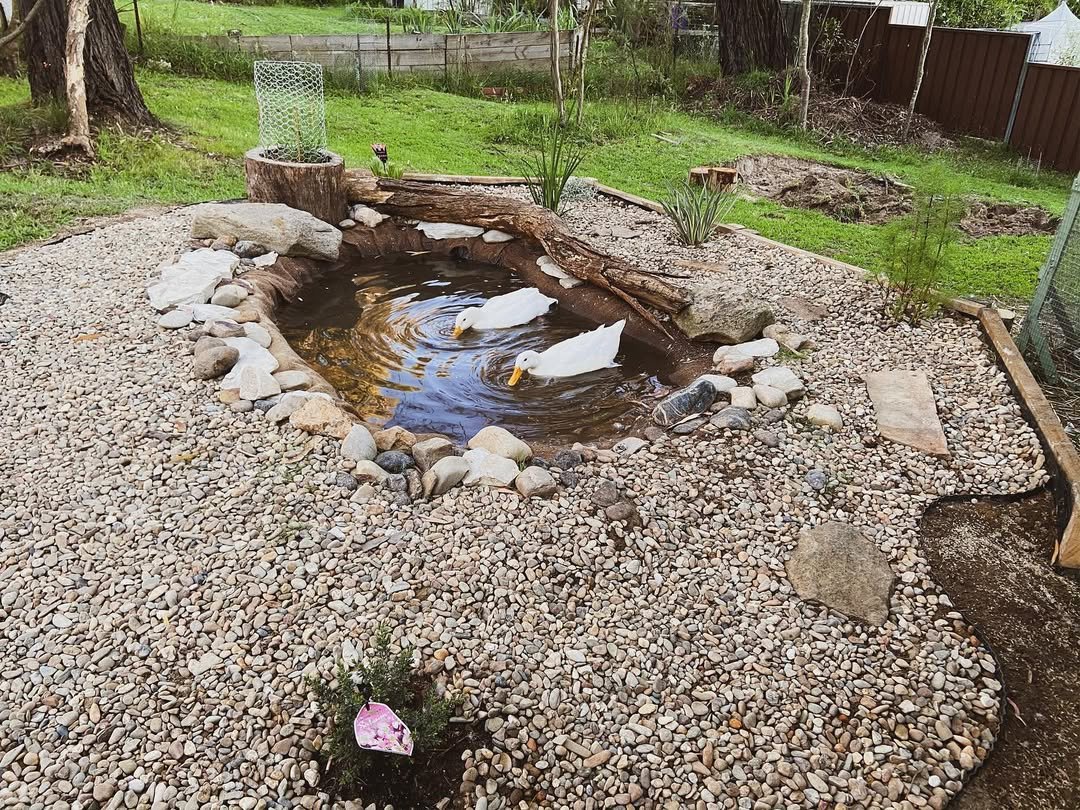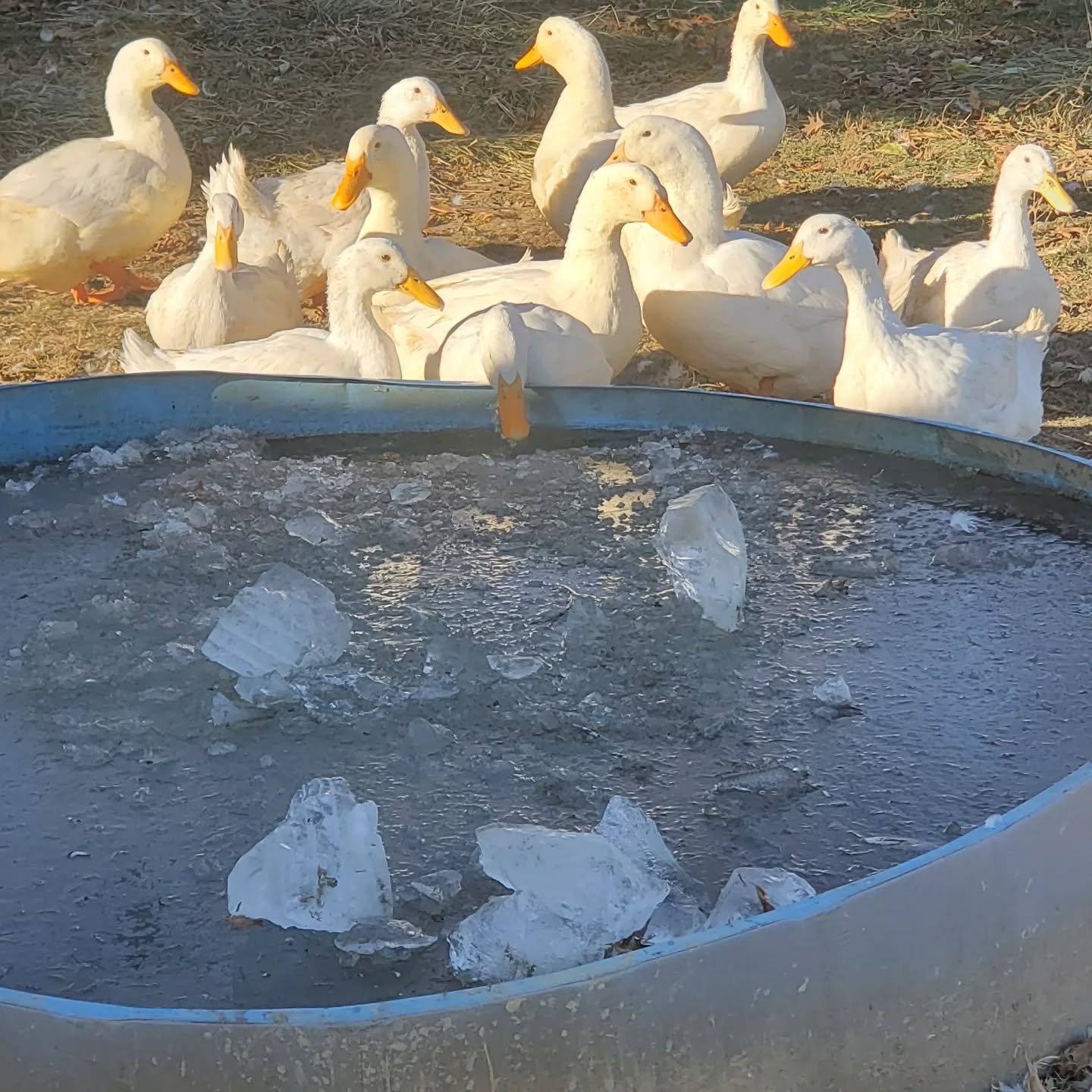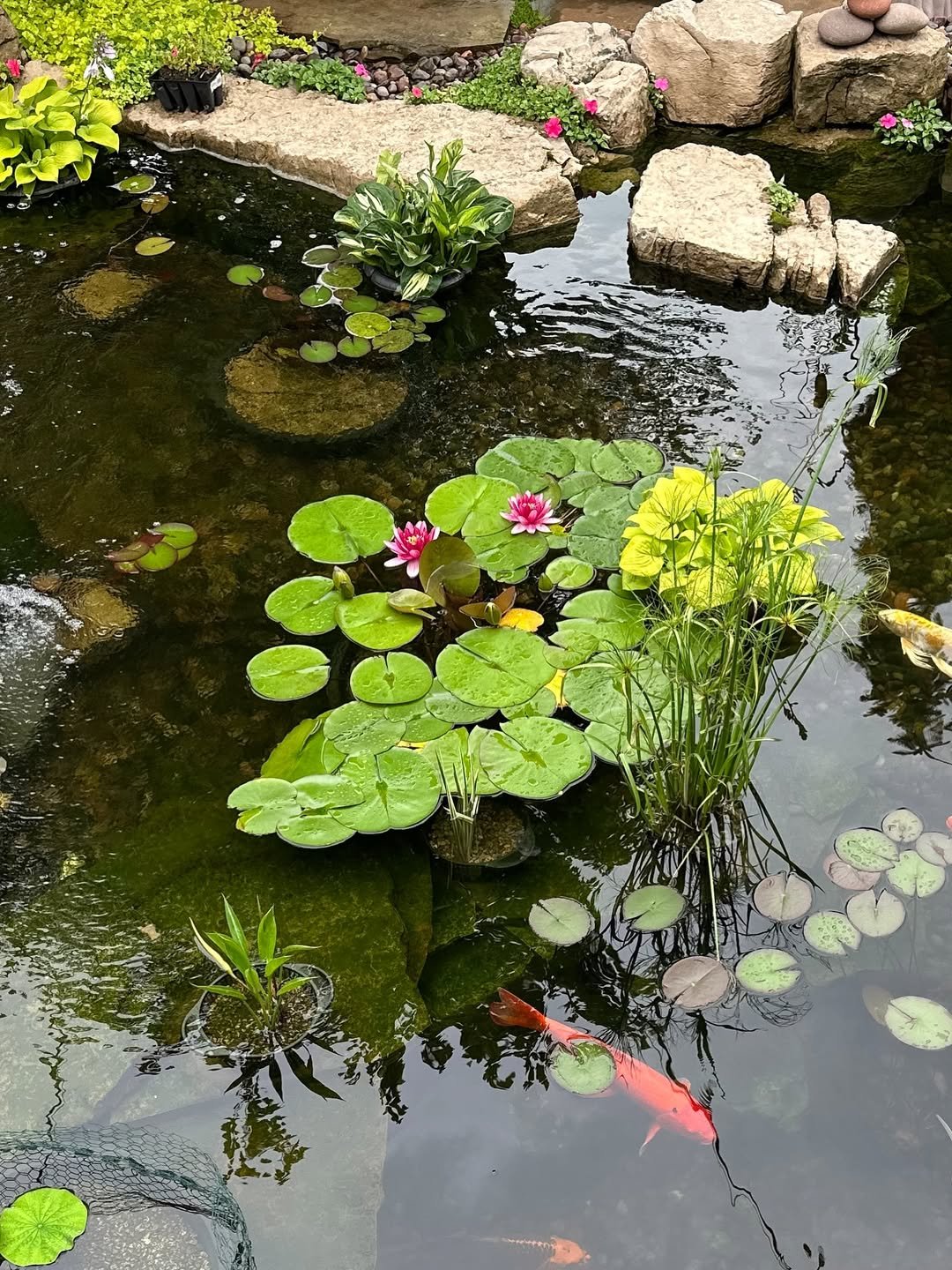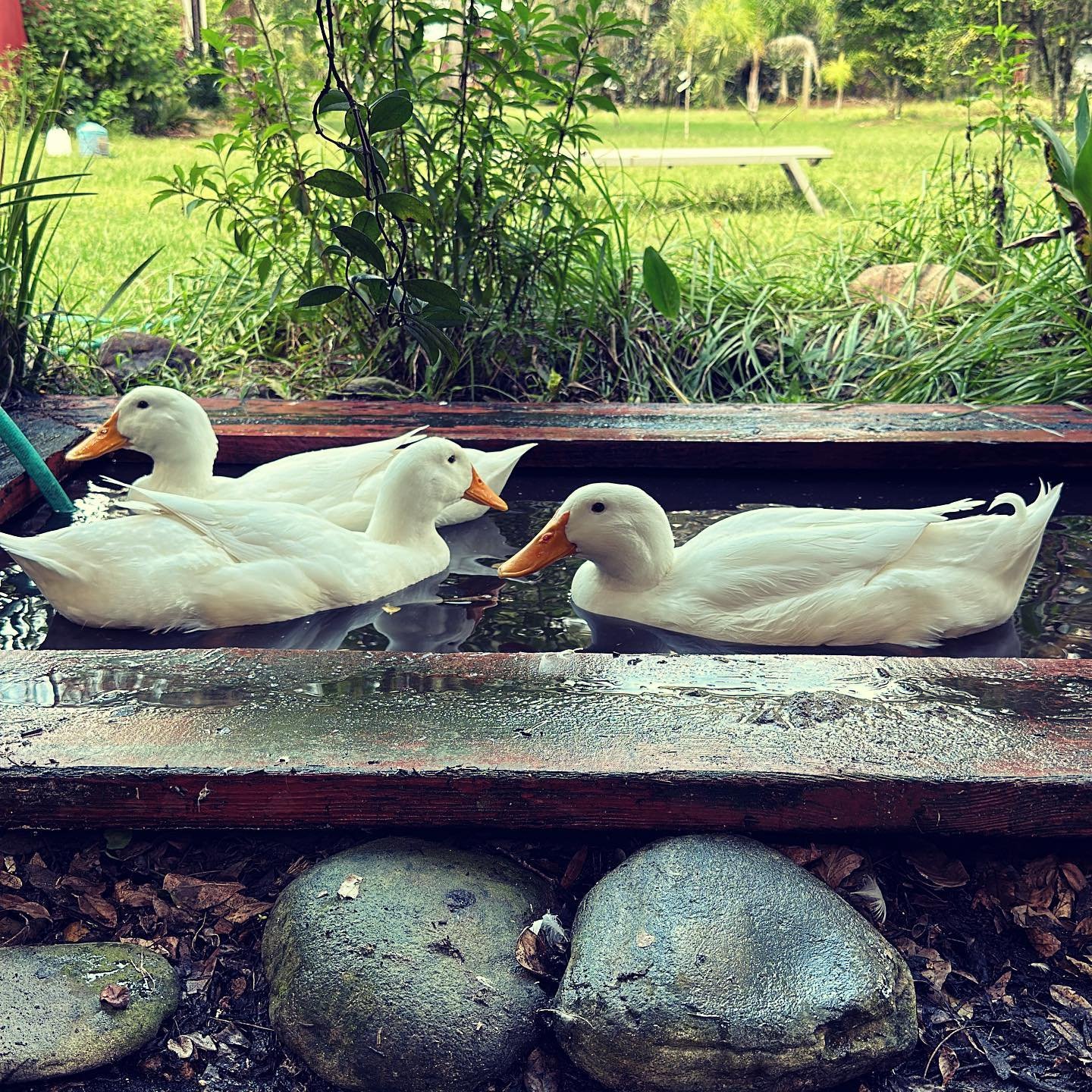In the winter, water loses heat through its surface, which causes the pond to freeze when the water remains unmoved.
To avoid this, farmers create a pond in a sphere shape for fish, as less area is exposed to heat loss. But that doesn’t really fit ducks.
Since I know unfreezing pond hacks, I haven’t deprived my birds of a bath in the winter.
What Happens to Ducks When the Pond Freezes?
If your ducks are domestic breeds, they will still stand on the frozen water until you arrive and break up some ice for them.
And they can swim in the freezing cold water. They are more hardy birds than chickens and can survive even in temperatures as low as 20ºF.
However, they need to wait patiently for the pond to thaw if it is frozen over with thick ice.

Wild ducks migrate to the South for warmer conditions. But domestic ducks don’t have enemies, so they don’t need to fly away from their safe home.
They have a large protected backyard to hang out in.
Mine are Muscovy, which are a harder breed than regular ones. They gather around their coop or open yard, where I have corn, scratch grains, and carbs for them.
Best Ways to Keep a Duck Pond from Freezing
1. Use a Pond Heater or De-Icer
Pond heater or de-icer raises the temperature of pond water to melt the ice.
They not only defrost the pond but also provide a suitable water temperature for ducks to swim. If you’ve put farming fish in the pond, this can be a solution in winter.

You can find floating and submersible heaters.
I suggest you go with the one having thermostatically controlled and automation options.
Once the temperature reaches 50°F, the device turns off automatically and restarts when the temperature drops.
This will help you save on your electricity bills. To make it more sustainable, you can connect it to solar power.
2. Install a Pond Aerator or Bubbler
I personally use all my pumps.
When pumps start, they move the water, cracking the icy tops. There are several pump options, including air pumps, fountain or pond aerators.
When winter is at its peak, pond fish go deeper to hibernate and get warm water near the surface.
You have to add aeration to keep a hole open in the ice about 2 inches down, but never on the bottom. Place the pump or aerator near the edges where ducks drink.
When the water temperature rises to around 50-55°F, turn off your device.
Make sure to keep a hole open for gases to escape.
Air pumps or bubblers also help increase instant aeration or oxygen, which benefits fish health. So, they will also be useful in the summer.
3. Increase Water Volume & Depth
Have you thought about why deeper ponds freeze slowly?
It is because thermal mass resists temperature fluctuation.
So before building a pond, you need to consider the sound depth for the water volume and insulation.
I think 2-3 feet depth is ideal. Mine is 3 feet, in which I run an aquarium air pump from November through March to ensure there is an air hole.

You can also increase the water level so that it takes a longer time to remain unfrozen.
One more thing you can do is to remove sludge to improve heat retention.
4. Insulate the Pond
To trap the warmth of water, you can cover the pond.
There are several methods, including floating foam boards, covering with straw or pond netting, and using a greenhouse-style cover or a portable greenhouse.
You can make DIY covers from recycled materials, such as Styrofoam and bubble wrap.
Every year, I have insulation mats used in construction. It’s insulation wrapped in plastic, which keeps it dry.
Besides, a sheet of polycarbonate or acrylic is an option. You can put it on top or even get them double-paned if you need. Stroll down your neighborhood, and you would find several old windows that people want to get rid of.
To keep the filter running, place it in the pond with the hose attached. So, there will be less surface area.
However, it’s risky to keep the filter outside, especially if winter is harsh. It might freeze and break when the power is cut off.
5. Use a Floating Ball or Ping Pong Balls
I like this hack as winter blows in with a breeze.
Air is a good insulator, so wind movement keeps water from freezing.
If you cover the top opening of the pond with Ping Pong balls, it will work similarly to a vacuum flask or thermos to insulate the water a bit.
The balls will float in water as they are hollow and buoyant.
It’s inexpensive and low-maintenance, making it ideal for mild climates.
Floating balls also help prevent evaporation, so you can use them in the summer.
Is it Safe for Ducks to Swim in a Pond with an Electric Device?
If the electric equipment used in or on or near the outdoor water reservoir, like a pond, whether it is a heater or air pump, it should be shock-proof.
Without protection, the devices leak electric current into the water, which can paralyze a duck, causing it to drown.
They must be fed from a circuit protected by a GFCI (Ground Fault Circuit Interrupter) type outlet or breaker.
In fact, a standard breaker alone cannot protect from shock.
Whatever device you’re using, make sure to plug it into a properly operating GFCI outlet. This helps you prevent electrifying pond water.

GFCIs are a lifesaver for ducks and fish, particularly in areas with the influx of cheap, imported electrical equipment that sometimes malfunctions.
Besides, a GFCI breaker or outlet shuts off the power supply to the faulty extension cords and equipment. If an extension or equipment frequently trips a GFCI, you need to replace the pieces.
Final Thoughts
What about duck tubs or a pool?
The tub also freezes with ice and cracks on it once in a while, and makes a huge mess. This can make you buy a new tub every 1-2 weeks in the winter.
So, you need to keep them indoors and add wind protection.










Leave a Reply